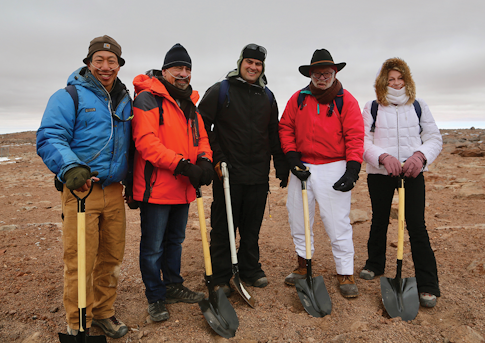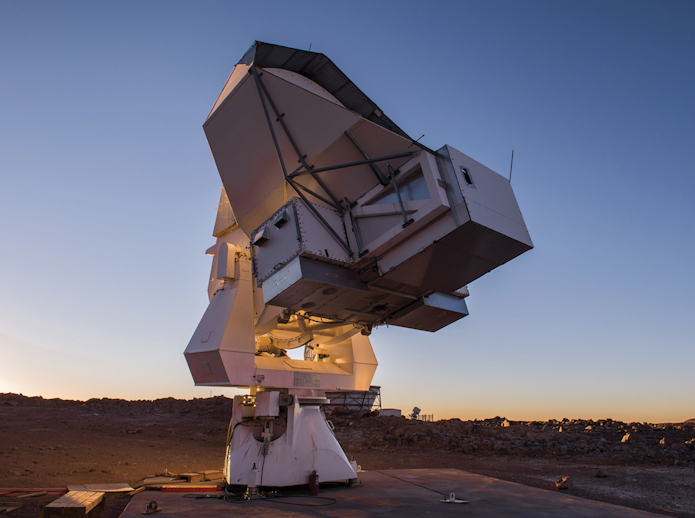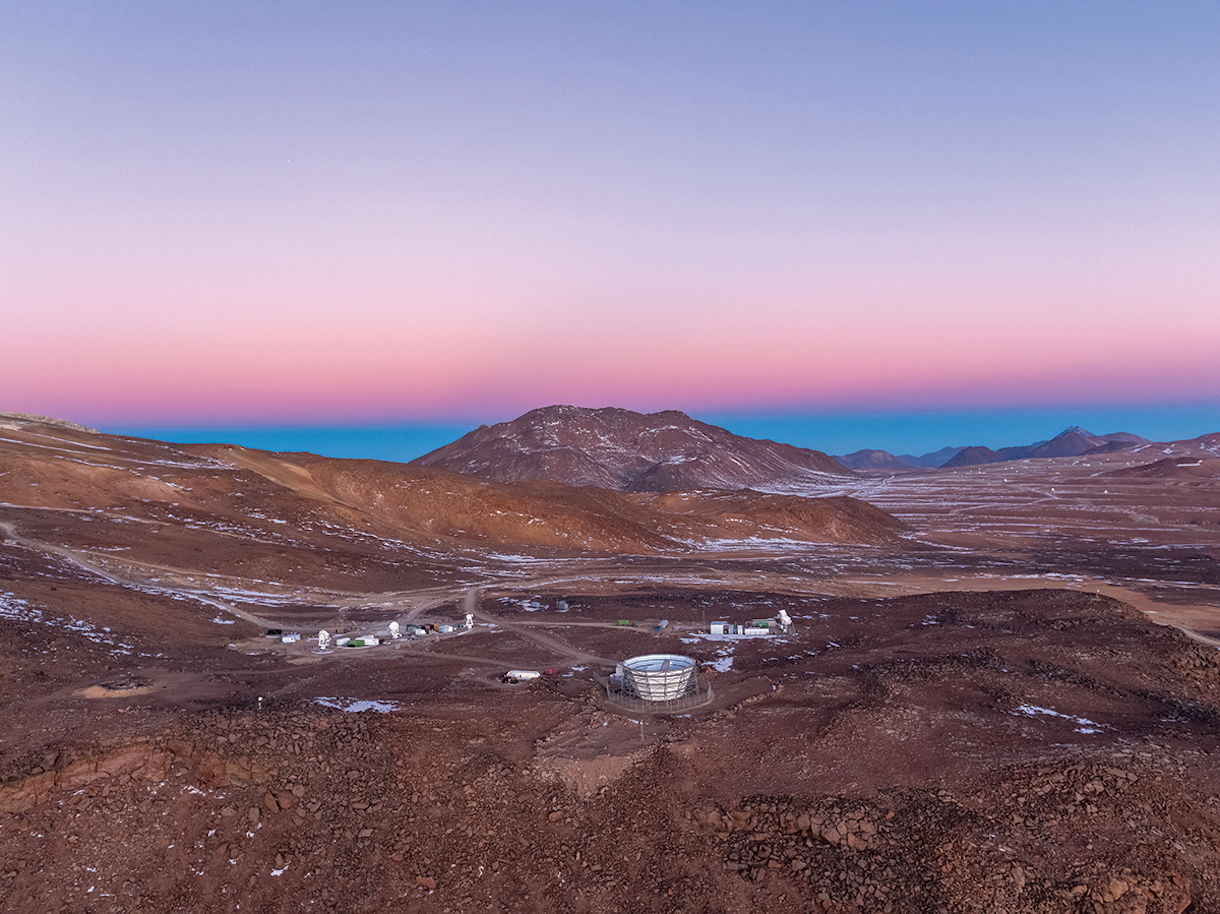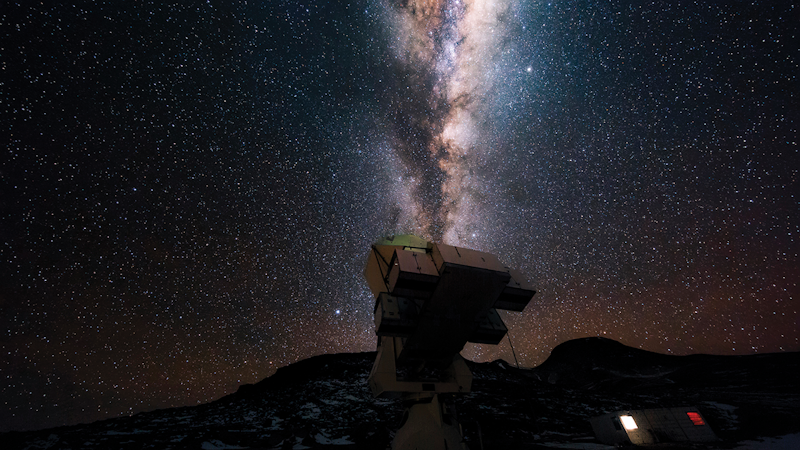
A Cosmic Merger Over Vegan Sprouts
 I recognized his gravelly voice instantly. It was just before Christmas in 2014: Jim Simons, calling me to propose a merger. “I’ve been talking to folks at Princeton. I know they’re your competitors,” he said, referring to the stunningly successful Atacama Cosmology Telescope (ACT) project led by Princeton University and the University of Pennsylvania. ACT had pioneered high-precision observations of the cosmic microwave background (CMB) from their high-altitude perch in the Chilean desert. It was also directly competing with the Simons Array project that I co-founded with Adrian Lee of the University of California, Berkeley in 2012.
I recognized his gravelly voice instantly. It was just before Christmas in 2014: Jim Simons, calling me to propose a merger. “I’ve been talking to folks at Princeton. I know they’re your competitors,” he said, referring to the stunningly successful Atacama Cosmology Telescope (ACT) project led by Princeton University and the University of Pennsylvania. ACT had pioneered high-precision observations of the cosmic microwave background (CMB) from their high-altitude perch in the Chilean desert. It was also directly competing with the Simons Array project that I co-founded with Adrian Lee of the University of California, Berkeley in 2012.
“I’ve been thinking,” Jim continued. “Why don’t you and Adrian join forces with ACT and take out the competition?” The “competition” was the other half-dozen or so CMB polarization experiments seeking the theorized imprint of primordial gravitational waves, possibly resulting from cosmic inflation — the ‘spark’ that ignited the Big Bang.

Wow, Jim Simons, legendary Wall Street titan and financial power broker, was suggesting a merger … followed by a monopoly. This time the consolidation was not of the corporate kind but of the cosmic kind.
Because Simons Foundation funds go not to decades-old research by single individuals but rather to teams working on long-term, high-risk, high-reward science with true breakthrough potential, it has unparalleled agility and flexibility, allowing it to make transformative contributions to science.
Jim’s idea was a paradigm shift. In the field of cosmology, two teams of our size had never merged; at the time, over 100 people worked on ACT and the Simons Array each. There was no precedent for it. There’d be birth pangs for sure. But thankfully, the Simons Foundation had a history of nucleating and nourishing collaboration.
Jim’s idea of such a merger apparently germinated when he was vice chair of the board of trustees for the Institute for Advanced Studies. It brought him into contact with theoretical physicist and cosmologist Paul Steinhardt of Princeton University. Unbeknownst to me, Paul argued that having two groups a stone’s throw away from each other in Chile was inefficient and backed the idea of a supergroup of CMB experimentalists.
In late 2014, Jim was now suggesting a grand partnership. How big could we think? In early 2015, I invited Mark Devlin of the University of Pennsylvania and Suzanne Staggs of Princeton University, two leaders of the ACT experiment, to my home base at UC San Diego. I sought advice about their ideas for the ultimate cosmic microwave background experiment. What would it look like? How many telescopes should we use, what frequencies are optimal, what kind of detectors would be best? I also engaged Adrian, my longtime collaborator and world-renowned leader of many CMB experiments.

In June 2015, Princeton University held an event to celebrate the 50th anniversary of the discovery of the CMB by Arno Penzias and Robert Wilson. Jim planned to attend and invited me to meet him for lunch on the first day of the celebration. Everyone milled around near Jim, hoping for a few seconds with the somewhat inscrutable man known as the “world’s smartest billionaire.” “If I gave a dollar to each person who told me I’m a genius, even I’d be broke,” Jim said as we headed out for lunch. He wanted to hear if I’d made any progress on the cosmic microwave background supergroup.
The first order of business was lunch. “I want a cheeseburger,” Jim said. No burgers were to be immediately found, so we settled on a vegan restaurant and ordered some assorted sprouts. I’d already begun furiously scribbling on a napkin, sharing the ideas and insights gleaned earlier in the year from my conversations with Lee, Devlin and Staggs.
For the next-generation instrument, we’d need to go well beyond the then state-of-the-art BICEP2 experiment: Whereas BICEP2’s 512 polarization- sensitive detectors were each cutting- edge, there simply weren’t enough of them, and they operated at only a single frequency (150 GHz, corresponding to two-millimeter-wavelength light, where the CMB is brightest). That’s why the BICEP2 team had to retract in 2014 the conclusion that it had discovered the imprint of cosmic inflation; the experiment, operating at only one frequency, was unable to distinguish CMB polarization from signals that came from galactic dust instead.
To make progress, we needed tens of thousands of detectors, spread across a wide range of frequencies: low frequencies to measure the Milky Way’s synchrotron radiation, and high frequencies to measure, and remove, the dust signals that had vexed BICEP2. This new super-experiment could simultaneously address other fascinating problems in cosmology, searching for the masses of neutrinos, exploring the formation of galaxy clusters, and probing the properties of dark energy. Ultimately, such an experiment might answer the oldest question humans have ever asked: “Why is there something rather than nothing?”

The experiment I was sketching on a rainforest’s worth of napkins would inflate the sensitivity to cosmic inflation by 100-fold — two orders of magnitude. But it wouldn’t be cheap.
“How much would it cost?” Jim asked. “About $50 million” was my reply. He didn’t spit out his soda, so I figured he wasn’t in sticker shock.
He insisted that we’d need more than just brains and cash. We’d need to run the project on a much more disciplined level, like a business, with professional project management, something unknown to CMB experimentalists. In that moment, he made evident his decades of leadership in academia, finance and philanthropy.
We meandered back from lunch and talked science and reminisced for hours beside an ivy-ensconced library on Princeton’s campus, with me being careful to remain out of earshot of potential competitors. As we chatted, I caught a glimpse of the twinkle in his eyes that my father, mathematician James Ax, must have enjoyed four decades earlier, when both were young men discussing fanciful mathematical ideas.
Jim seemed pleased that it was technologically possible to answer some of the biggest questions there are: How did the universe begin? How will it end? He asked me one last ‘how’ question — “How long before it’s in the textbooks if you’re right?” I replied 10, maybe 20 years. He said, “Let’s make it closer to 10.”

The rest of that year, the leaders of the Simons Array (which encompassed an earlier experiment called POLARBEAR) and ACT teams spoke biweekly, hammering out the details of what would become the next chapter in experimental cosmology, the Simons Observatory.
We thought long and hard about the technical details, the design, budget, schedule and management structure to present to the Simons Foundation. We enlisted a group of eminent scientists to serve on an external advisory committee, charged with giving both technical guidance and impartial oversight. I became director of the Simons Observatory, responsible for the overall project health. Our ‘chief executive officers’ are our three spokespersons: Mark Devlin, Adrian Lee and Suzanne Staggs. They are responsible for the day-to-day leadership of the collaboration.
In mid-2016, the foundation announced the funding of the Simons Observatory. The union of two experiments brought together more than 250 scientists, engineers and managers, from undergraduates to emeritus faculty at over 40 institutions worldwide. With 60,000 exquisitely sensitive, multifrequency cryogenic detectors cooled to 0.1 kelvin at the foci of three half-meter-diameter refracting telescopes, and one six- meter-diameter reflecting telescope, the Simons Observatory will reveal a view of the cosmos vastly more detailed than ever before. The project broke ground in a small ceremony at the site in 2019. Four new telescopes and detectors will be deployed by 2022, followed by years of data acquisition and analysis by the whole collaboration, led by the Flatiron Institute. Thanks to the support of the Simons Foundation, a new era in cosmology awaits.

